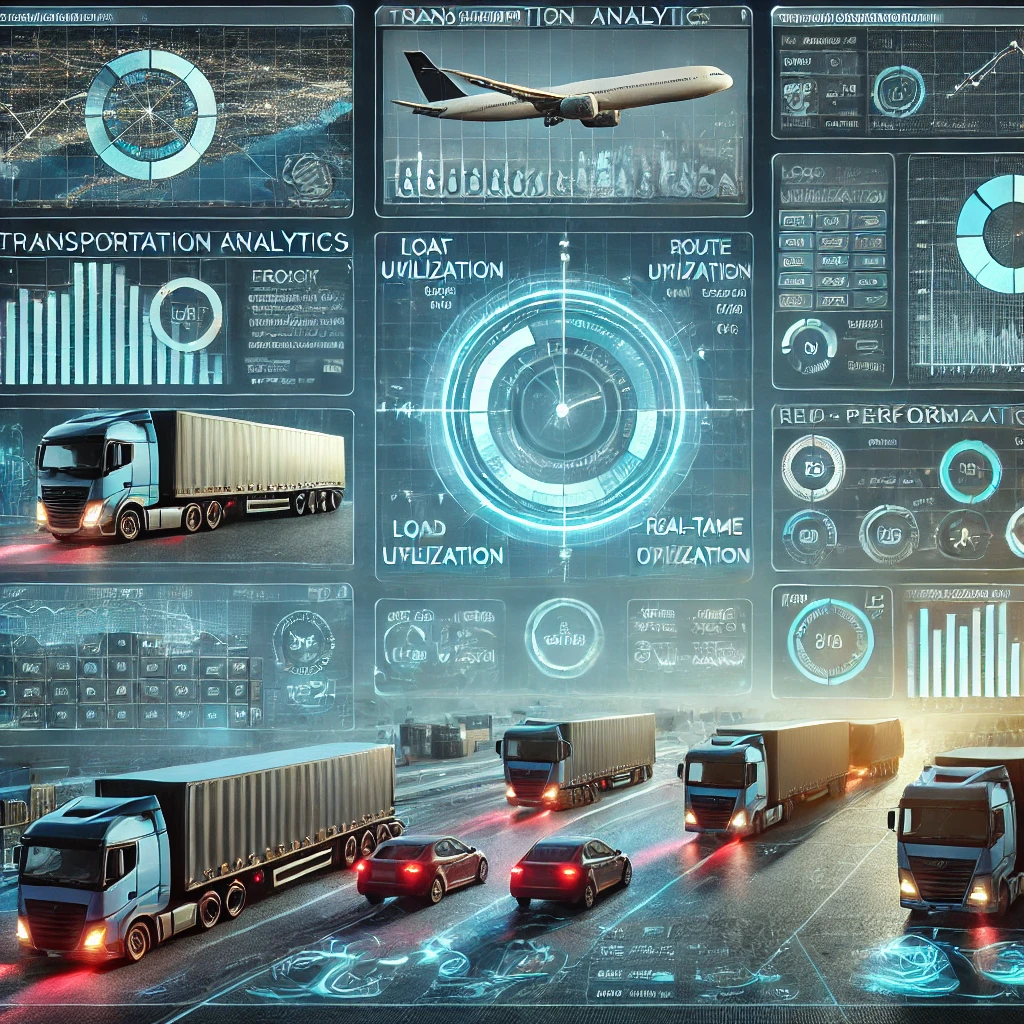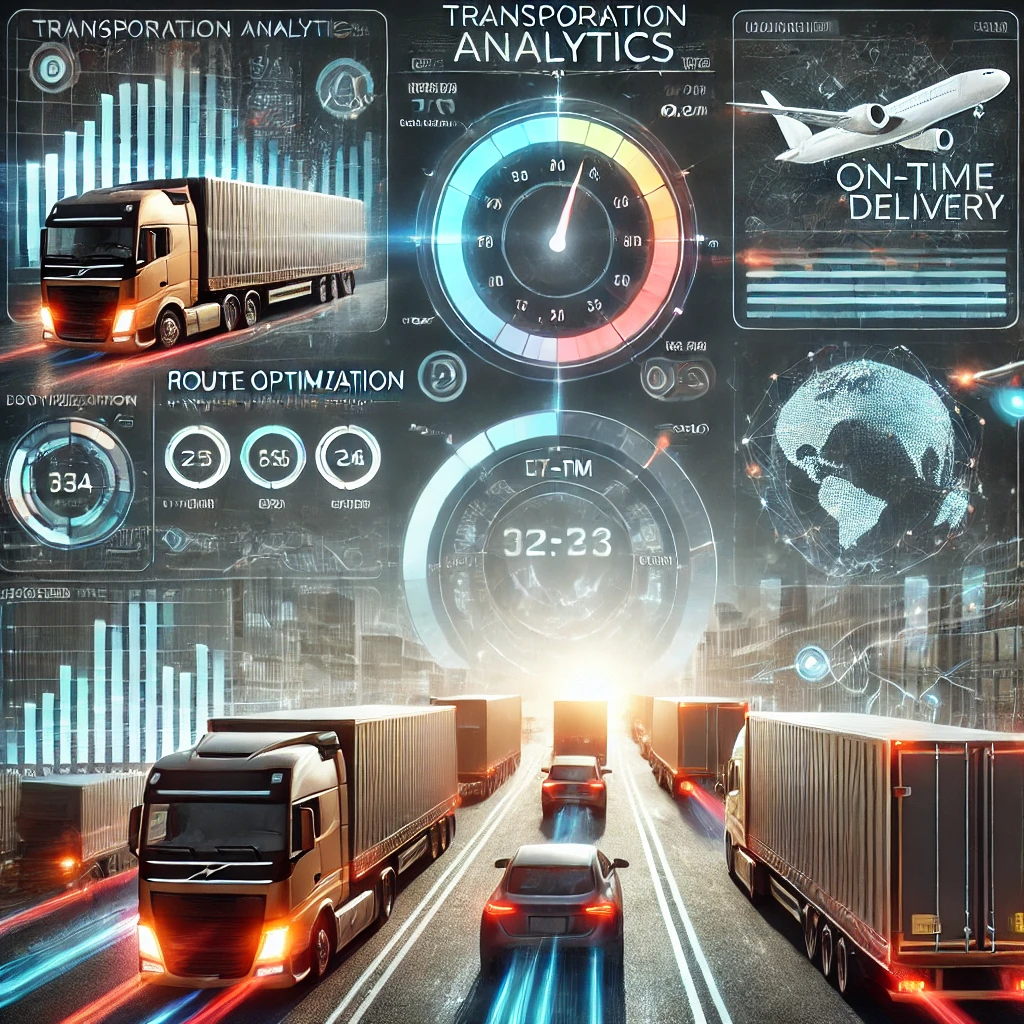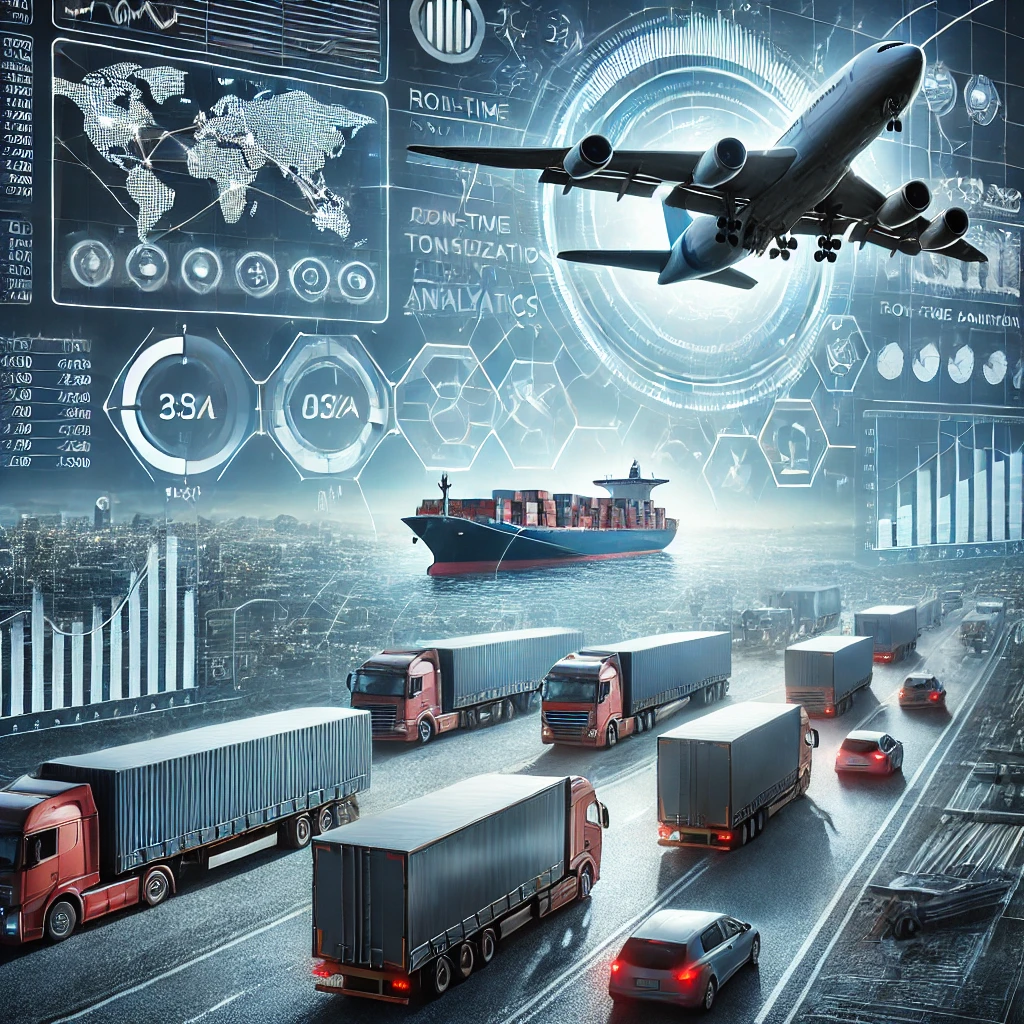Transportation Analytics: Revolutionizing the Freight and Logistics Industry

Understanding Transportation Analytics
Transportation analytics refers to the use of data analysis techniques to gain insights and make informed decisions in the transportation sector. This field encompasses various sub-domains, including freight analytics, cargo analytics, and shipping analytics. By leveraging advanced technologies and data-driven approaches, companies can streamline their operations, enhance efficiency, and gain a competitive edge in the market.
Key Components of Transportation Analytics:
- Data collection and integration
- Advanced analytics and machine learning algorithms
- Predictive modeling and forecasting
- Real-time monitoring and reporting
- Visualization tools and dashboards
The Power of Freight Data Analytics
Freight data analytics is a crucial subset of transportation analytics that focuses specifically on the movement of goods. By analyzing vast amounts of freight data, companies can uncover valuable insights to optimize their supply chains and improve decision-making processes.
Benefits of Freight Data Analytics:
- Cost Optimization: Identify inefficiencies and reduce operational expenses.
- Route Optimization: Determine the most efficient transportation routes and modes.
- Demand Forecasting: Predict future shipping volumes and adjust capacity accordingly.
- Risk Management: Identify and mitigate potential disruptions in the supply chain.
- Performance Tracking: Monitor and improve key performance indicators (KPIs).

Essential Metrics in Freight Analytics
To harness the full potential of freight analytics, it’s crucial to track and analyze the right metrics. Here are some key indicators that should be part of any comprehensive freight data management strategy:
- On-Time Delivery Rate: Measures the percentage of shipments delivered within the agreed-upon timeframe.
- Cost Per Mile: Calculates the total transportation cost divided by the total miles traveled.
- Freight Bill Accuracy: Tracks the percentage of freight bills that are error-free.
- Load Utilization: Measures how effectively cargo space is being used in each shipment.
- Transit Time: Monitors the average time it takes for shipments to move from origin to destination.
- Claims Ratio: Tracks the number and value of claims filed relative to the total number of shipments.
- Fuel Efficiency: Measures the amount of fuel consumed per mile or ton-mile.
Cargo Analytics: Optimizing the Movement of Goods
Cargo analytics focuses on the analysis of data related to the transportation of physical goods. This branch of transportation analytics helps companies optimize their cargo operations, improve efficiency, and reduce costs.
Key Areas of Cargo Analytics:
- Inventory Management: Optimize stock levels and reduce carrying costs.
- Container Utilization: Maximize the use of container space and reduce empty miles.
- Port Operations: Streamline loading and unloading processes at ports and terminals.
- Intermodal Transportation: Optimize the transfer of cargo between different modes of transport.
- Last-Mile Delivery: Improve the efficiency of final delivery to end customers.

Shipping Analytics: Navigating the Seas of Data
In the maritime industry, shipping analytics plays a crucial role in optimizing vessel operations, reducing fuel consumption, and improving overall fleet performance.
Applications of Shipping Analytics:
- Voyage Optimization: Determine the most efficient routes based on weather, currents, and port conditions.
- Vessel Performance Monitoring: Track and analyze ship performance metrics to identify areas for improvement.
- Bunker Fuel Management: Optimize fuel consumption and reduce costs through data-driven decision-making.
- Port Call Optimization: Minimize time spent in port through better planning and coordination.
- Predictive Maintenance: Use data to predict and prevent equipment failures before they occur.

Implementing a Freight Spend Analysis Program
Freight spend analysis is a critical component of transportation analytics that focuses on understanding and optimizing transportation costs. By implementing a robust freight spend analysis program, companies can identify cost-saving opportunities and improve their bottom line.
Steps to Implement Freight Spend Analysis:
- Data Collection: Gather all relevant freight invoices, bills of lading, and transportation management system (TMS) data.
- Data Cleansing and Normalization: Ensure data consistency and accuracy across all sources.
- Spend Categorization: Classify spend data by mode, carrier, lane, and other relevant categories.
- Analysis and Benchmarking: Compare spend data against industry benchmarks and historical performance.
- Identify Opportunities: Pinpoint areas for cost reduction and efficiency improvements.
- Implement Changes: Execute strategies to optimize freight spend based on analysis findings.
- Monitor and Refine: Continuously track results and refine the analysis process.
Advanced Technologies in Transportation Analytics
The field of transportation analytics is rapidly evolving, with new technologies emerging to provide even deeper insights and more accurate predictions. Some of the cutting-edge technologies shaping the future of transportation analytics include:
- Internet of Things (IoT): Connected devices providing real-time data on vehicle location, condition, and performance.
- Artificial Intelligence and Machine Learning: Advanced algorithms that can predict demand, optimize routes, and automate decision-making processes.
- Blockchain: Enhancing transparency and traceability in supply chains and freight transactions.
- Big Data Analytics: Processing and analyzing vast amounts of data to uncover hidden patterns and insights.
- Cloud Computing: Enabling scalable and accessible data storage and processing capabilities.
- Digital Twins: Creating virtual replicas of physical assets to simulate and optimize performance.
Challenges in Transportation Analytics
While the benefits of transportation analytics are clear, implementing these systems comes with its own set of challenges:
- Data Quality and Integration: Ensuring consistent, accurate data across multiple sources and systems.
- Privacy and Security Concerns: Protecting sensitive data while still leveraging it for analytical purposes.
- Skill Gap: Finding and retaining talent with the necessary analytical and domain expertise.
- Technology Adoption: Overcoming resistance to change and ensuring widespread adoption of new analytics tools.
- Return on Investment (ROI) Justification: Demonstrating the tangible benefits of analytics investments to stakeholders.
Best Practices for Successful Transportation Analytics Implementation
To maximize the value of transportation analytics in your organization, consider the following best practices:
- Start with Clear Objectives: Define specific goals and KPIs for your analytics initiatives.
- Invest in Data Infrastructure: Ensure you have robust systems for data collection, storage, and processing.
- Foster a Data-Driven Culture: Encourage decision-making based on data and analytics across all levels of the organization.
- Prioritize Data Quality: Implement rigorous data governance and cleansing processes.
- Choose the Right Tools: Select analytics platforms that integrate well with your existing systems and meet your specific needs.
- Provide Ongoing Training: Ensure your team has the skills necessary to leverage analytics tools effectively.
- Start Small and Scale: Begin with pilot projects and gradually expand your analytics capabilities.
- Collaborate Across Departments: Break down silos and encourage cross-functional collaboration in analytics initiatives.
The Future of Transportation Analytics
As technology continues to advance, the future of transportation analytics looks bright. Some emerging trends to watch include:
- Predictive and Prescriptive Analytics: Moving beyond descriptive analytics to proactively address challenges and opportunities.
- Real-Time Decision Making: Leveraging 5G and edge computing for instantaneous data processing and decision-making.
- Autonomous Vehicles: Integrating data from self-driving vehicles into transportation analytics systems.
- Sustainability Focus: Using analytics to optimize routes and reduce carbon emissions in transportation operations.
- Advanced Visualization: Employing augmented and virtual reality for more intuitive data interpretation and decision-making.

Conclusion: Navigating the Future with Transportation Analytics
In an increasingly complex and competitive global marketplace, transportation analytics has become an indispensable tool for companies looking to optimize their logistics operations. By leveraging the power of freight data analytics, cargo analytics, and shipping analytics, organizations can gain valuable insights that drive efficiency, reduce costs, and improve customer satisfaction.
As we look to the future, the continued evolution of technologies like AI, IoT, and blockchain promises to unlock even greater potential in the field of transportation analytics. Companies that invest in building their analytical capabilities today will be well-positioned to navigate the challenges and seize the opportunities of tomorrow’s transportation landscape.
By embracing transportation analytics and fostering a data-driven culture, businesses can not only survive but thrive in the dynamic world of global logistics. The journey towards analytics maturity may be challenging, but the rewards – in terms of operational excellence, cost savings, and competitive advantage – make it a journey well worth undertaking.
